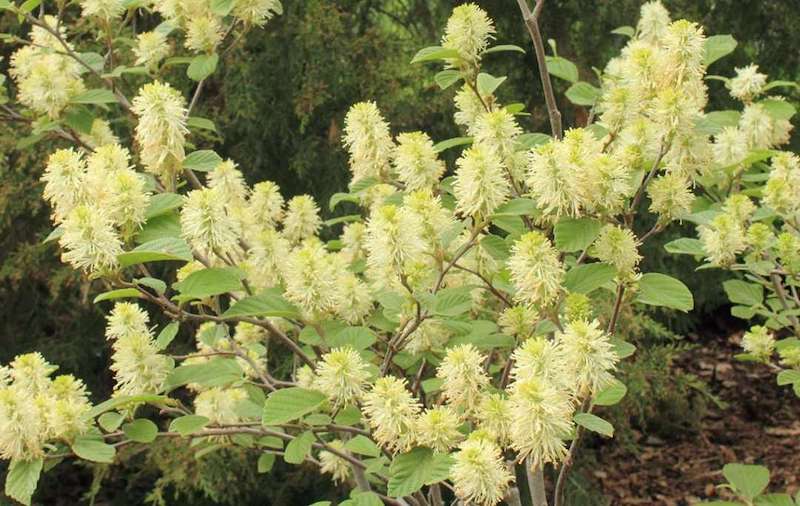Fothergilla is a small genus of shrubs in the witch hazel family, Hamamelidaceae. Native to regions in the southern United States, Fothergilla is popular for its natural branching form and its year-round interest in the landscape. These slow-growing plants are relatively low maintenance, only requiring occasional pruning to control their height and spread. Both species of fothergilla, F. major and F. gardenii, benefit from maintenance pruning. While the former species can grow up to 10 feet tall, the latter species grows and spreads to just 3-6 feet and may require less pruning for height control. Regardless of which species of fothergilla you are growing, it is important to establish a pruning regimen for healthy, tidy plants.

When to Prune Fothergilla
The best time to prune fothergilla is immediately after the blooming period in spring. Fothergilla produces flowers on last year’s growth. Pruning in late winter or early spring can remove the flower buds for the current season, while pruning in late summer or fall may remove next year’s buds. This can result in sparse or absent blooms. Waiting until after the flowers fade in spring allows ample time to prune before the next season’s buds develop.
Suckers, which are shoots arising from the base of the plant, can be pruned out at any time. It will be easier to prune them while they are small. Similarly, dead branches should be removed as soon as possible, including in winter. Removing suckers and dead branches will not affect the flowering of fothergilla.
Why Prune Fothergilla
The main reason to prune fothergilla is to control the spread of this vigorous shrub. Fothergilla produces numerous suckers at the base of the plant. These suckers can often overtake the landscape, forming dense colonies in areas where they may be undesired. Make sure to remove suckers for grafted types of fothergilla to prevent reversion to the graft type. Aside from removing suckers, fothergilla benefits from pruning to remove any dead, damaged, or diseased branches. Crossing and overlapping branches should be removed to prevent bark chafing, improve air circulation, and encourage sunlight penetration. Pruning can also control the height of this shrub.
How to Prune Fothergilla
Step 1 - Wait until the flowers have faded in late spring.
If you are pruning to maintain the growth habit of this shrub, it is important to time the trimming for late spring once the blooming period has ended. This will prevent the accidental removal of flower buds.
Step 2 - Prune out excessive growth to maintain height and form.
Using pruners or loppers, prune about a quarter-inch above a bud that is oriented away from the center of the plant. Remove no more than one-third of each branch to control height. Prune out entire crossing or dead branches. Try to prune fothergilla by working with its natural shape and form; too much unnecessary pruning may damage the plant and result in weaker, unsightly growth.
Step 3 - Remove any suckers.
Cut suckers completely down to the ground as soon as they appear. If desired, suckers can be transplanted to develop into new fothergilla shrubs. To do this, simply dig up the sucker, carefully lifting it up to keep its root system intact. Plant it in a desired location where it will have plenty of room to grow.
Fothergilla Pruning Tips
- Prune in spring after the flowers fade
- Remove suckers and dead branches at any time
- Cut back to an outward-facing bud to control height
- Do not remove more than a third of each branch
 |
Lauren Youngcourt - Published 06-13-2023 |
